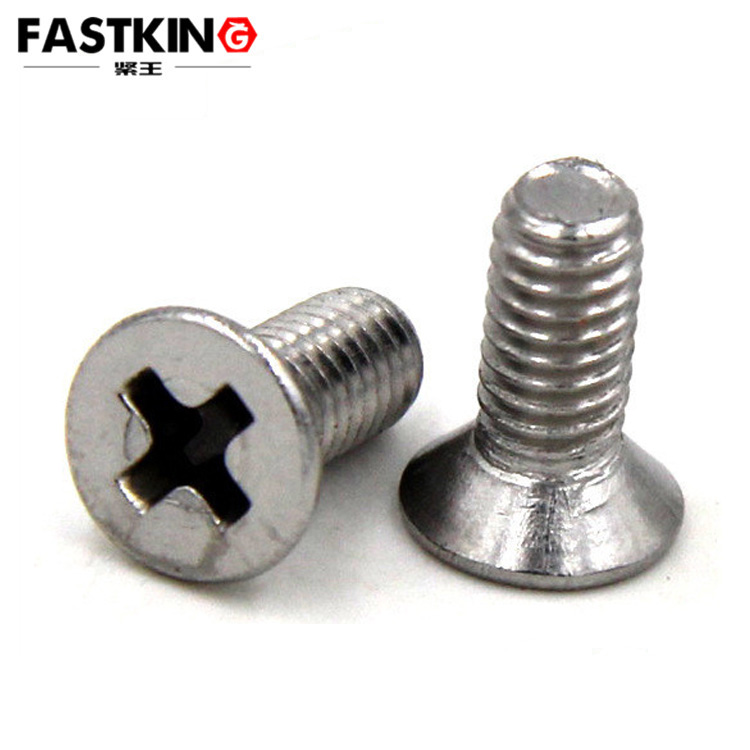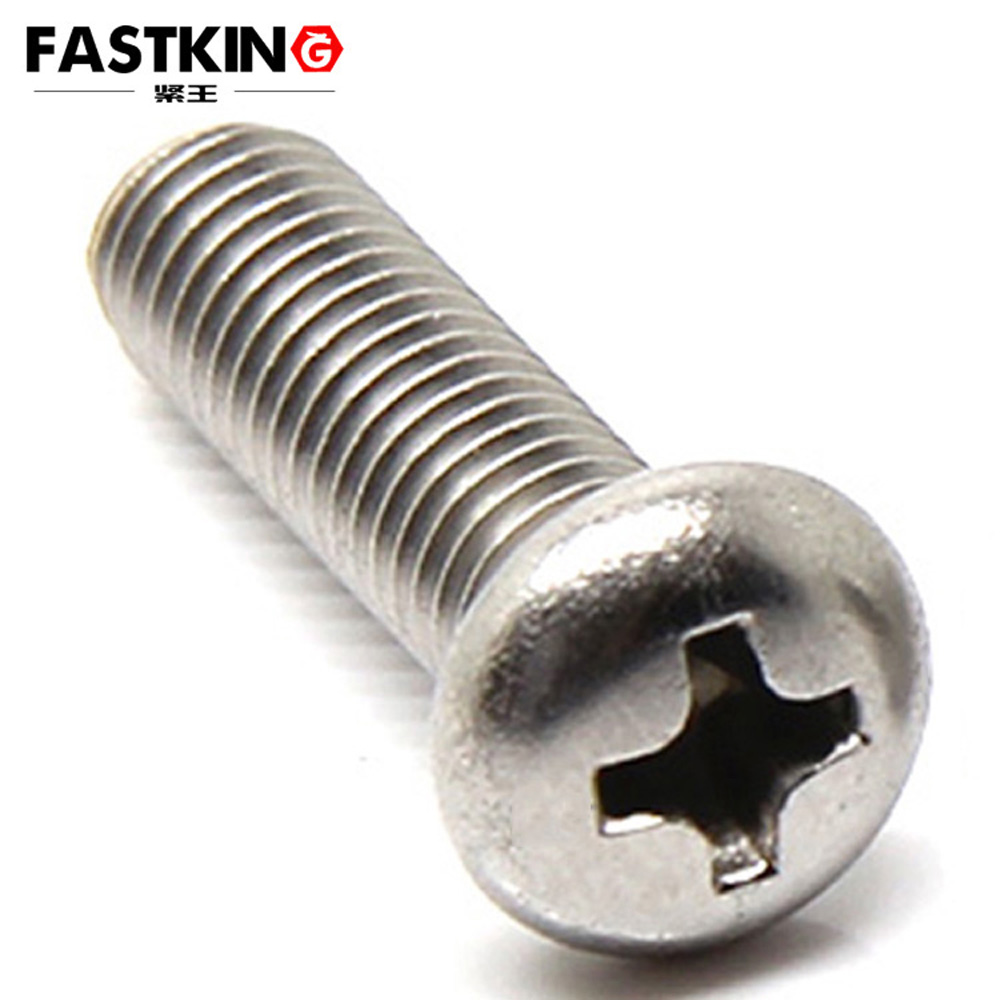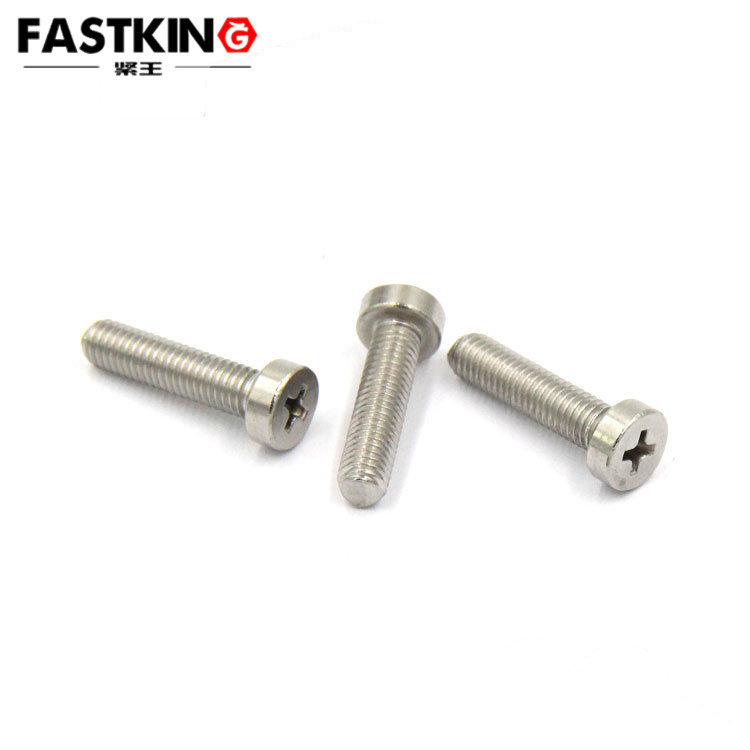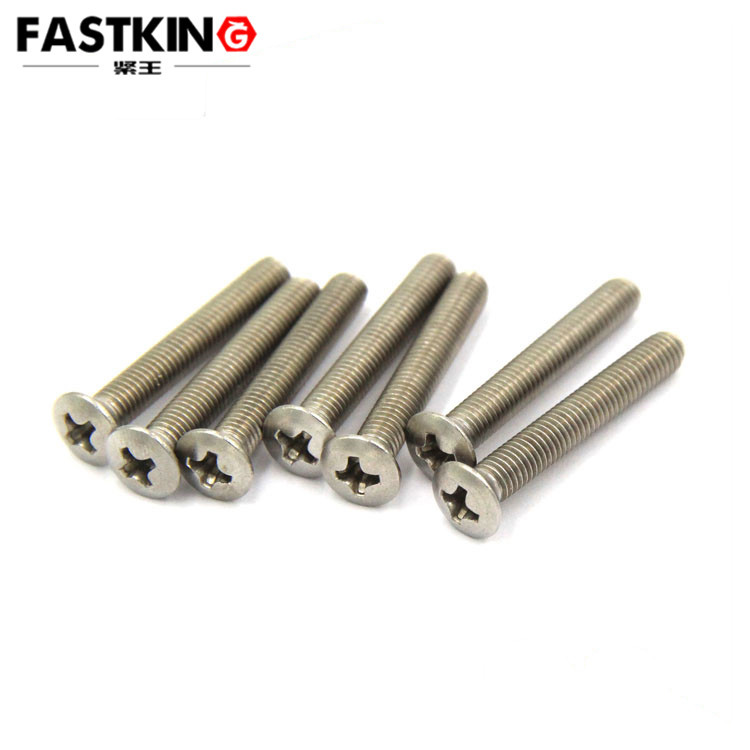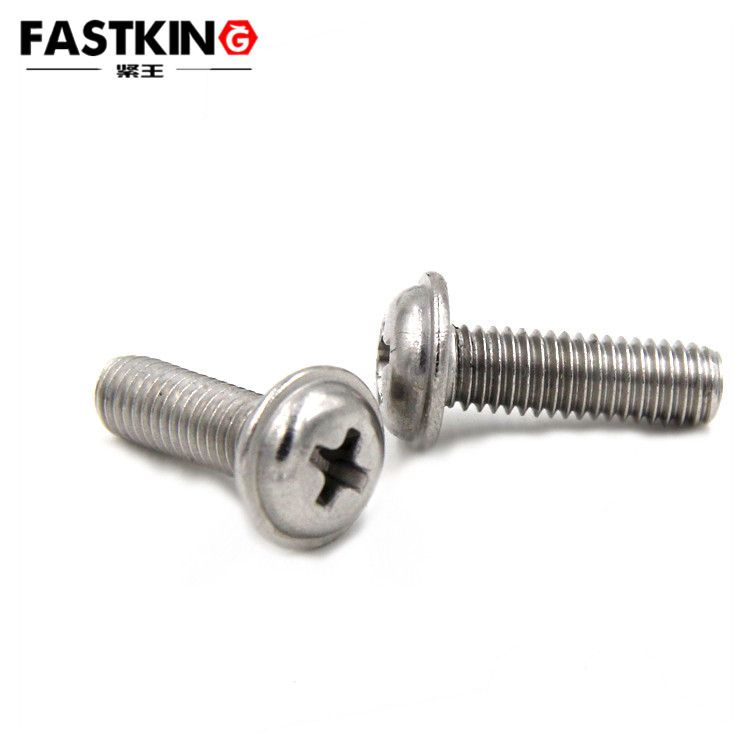Countersunk cross head machine screw-din965
Material: stainless steel 304316, grade 8.8 high strength and grade 12.9 high strength
Product standard:din965
It can also support non-standard customization.
The integration of 304 stainless steel has enabled a qualitative leap in the performance of these small screws. As one of the most widely used austenitic stainless steels, 304 stainless steel contains approximately 18% chromium and 8% nickel. These two elements work together to form a dense chromium oxide protective film on the screw surface. Like an "invisible armor," this film effectively isolates the internal metal from corrosive media such as air, moisture, and acid-base substances. Even in humid bathroom environments (e.g., installation of bathroom hardware), slightly corrosive kitchen scenarios (e.g., fixing cabinet hinges), or semi-open outdoor settings (e.g., assembling balcony clothes racks), it can resist rust for a long time, preventing connection loosening caused by screw failure due to rust.
Meanwhile, 304 stainless steel balances excellent mechanical strength and toughness. Its tensile strength can reach over 520MPa, and yield strength is approximately 205MPa. It can withstand a certain degree of fastening pressure without breaking easily, while also having slight ductility to avoid brittle fracture under low-temperature or impact conditions. This characteristic makes it shine in the medical device field—for internal connections of dental tools and small diagnostic instruments, it not only ensures screws are rust-free to meet hygiene standards but also endures minor vibrations and operational forces during daily use of equipment, fully satisfying these strict requirements.
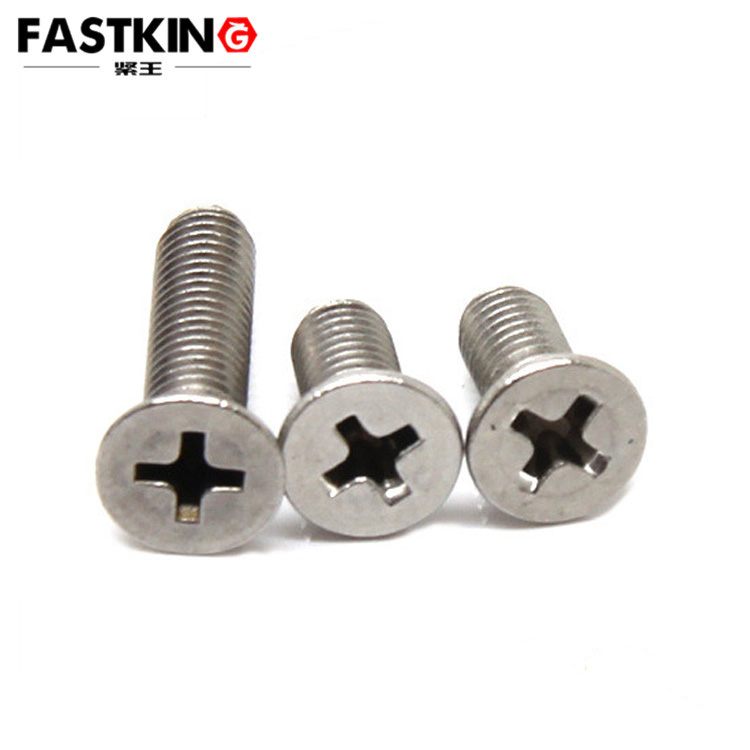
The pairing of flat-head cross-recessed machine screws and 304 stainless steel is a veritable "golden combination" in the electronic equipment manufacturing industry. The fixing of internal motherboards, installation of camera modules, and fastening of battery connectors in smartphones all rely heavily on such screws. The internal space of smartphones is extremely compact, with gaps between components measured in millimeters or even micrometers. The flat-head design allows screws to fit perfectly into the phone body without occupying extra space. The rust resistance of 304 stainless steel prevents screws from rusting due to moisture generated by internal circuit board heat dissipation or sweat accidentally contacted by users, thereby avoiding the impact of rust products on the normal operation of circuits.
In wearable devices like smartwatches and wireless earbuds, the role of these screws is even more critical. Wearable devices are in long-term contact with human skin, and the salt in sweat has a certain corrosive effect on metals. 304 stainless steel can effectively resist sweat erosion, ensuring long-term stable internal connections of devices. Additionally, its lightweight property does not increase the device weight, conforming to the "lightweight" design trend of wearable products.
The home and daily necessities sector is also a major "battleground" for flat-head cross-recessed machine screws. They can be found in fixing drawer slides of wardrobes, installing desk partitions, and connecting internal components of washing machines. Taking kitchen cabinets as an example, the connection between cabinet doors and hinges requires multiple small screws for fixation. 304 stainless steel can resist erosion from kitchen oil fumes and moisture, preventing cabinet doors from loosening and making noise when opening or closing due to screw rust. The flat-head design hides the screw heads inside the hinges, without affecting the neat appearance of cabinets.
In children’s furniture, the safety of these screws is particularly prominent. The flat-head design has no protruding edges, preventing children from being scratched during play. 304 stainless steel contains no harmful substances such as lead or cadmium, meeting safety standards for children’s products, so parents do not need to worry about material safety issues.
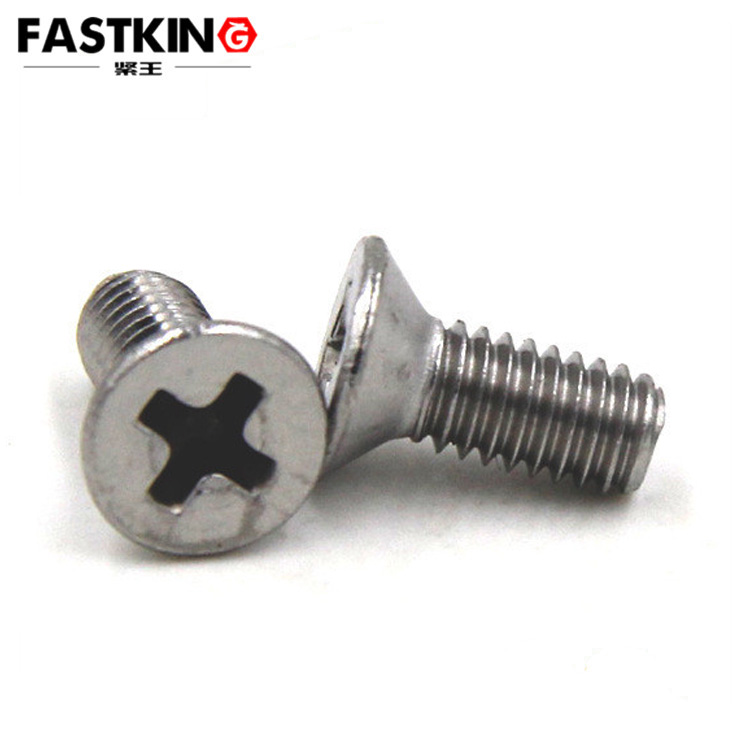
The medical device industry has extremely strict requirements for fasteners, and 304 stainless steel flat-head cross-recessed machine screws have become a "regular choice" in this field due to their outstanding performance. In small medical equipment like blood pressure monitors and blood glucose meters, screws are used to fix internal precision components such as sensors and displays. The stability of 304 stainless steel ensures screws do not rust or deform during long-term use of equipment, avoiding the impact of screw issues on the measurement accuracy of devices. The cross-recessed design also facilitates maintenance and repair by medical staff or technicians using standard tools.
In the adjustment components of dental treatment chairs, these screws play a key role. Dental chairs need to adjust height and angle frequently, so screws must bear a certain degree of dynamic load. The strength and toughness of 304 stainless steel ensure screws are not easily damaged under repeated stress. At the same time, its rust resistance meets the hygiene requirements of medical environments, reducing the risk of cross-infection.
Although flat-head cross-recessed machine screws are small in size, their role in industrial production and daily life is irreplaceable. 304 stainless steel not only endows them with "high-performance" rust and corrosion resistance but also provides reliable guarantees for long-term stable operation. From the precision assembly of electronic equipment to the safe fixation of home products, from meeting hygiene requirements of medical devices to satisfying durability needs of outdoor facilities, these small screws bear great responsibilities with "microscopic strength," silently safeguarding connection safety in various fields. As manufacturing industries continue to raise requirements for product precision, environmental protection, and durability, the application scenarios of 304 stainless steel flat-head cross-recessed machine screws will further expand, continuously injecting "small yet solid" strength into industrial development and quality of life improvement.

